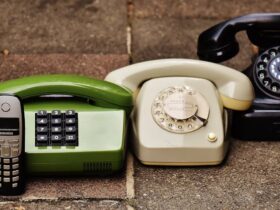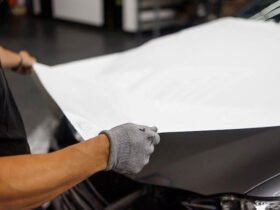When it comes to home improvement, air conditioning systems often receive the lion’s share of attention, especially in older properties. Many homeowners assume that upgrading their AC unit will sufficiently modernize their home’s climate control system. While installing a new, energy-efficient air conditioner does offer immediate benefits in terms of comfort and utility savings, it’s rarely the full solution for older homes. These houses often have deeper infrastructure issues—ranging from outdated heating systems and faulty insulation to antiquated ductwork and electrical limitations—that require attention beyond a surface-level upgrade.
Older homes were built in a time when energy efficiency was not a driving factor in construction. Their infrastructure wasn’t designed to work harmoniously with modern HVAC systems, meaning even the best AC unit will underperform if other components aren’t equally updated. To ensure optimal performance and long-term sustainability, homeowners must adopt a comprehensive approach, assessing and improving the full heating, ventilation, and cooling ecosystem.
Heating Systems: The Forgotten Half of the Equation
While air conditioning gets most of the attention during warmer months, heating systems play an equally critical role in maintaining year-round comfort and energy efficiency. In older homes, furnaces and boilers are often original to the structure or have only undergone minimal upgrades. These outdated systems tend to operate inefficiently, consuming more energy and delivering uneven heat distribution throughout the home.
Deterioration over time, combined with technological obsolescence, results in heating systems that are noisy, unreliable, and expensive to operate. They are also prone to sudden breakdowns, particularly during peak usage in colder months, which can result in emergency repairs or temporary loss of heat.
This inconvenience can be both dangerous and costly. Given these risks, homeowners should take proactive steps; don’t delay heating repairs when signs of inefficiency or mechanical failure emerge.
A well-functioning heating system is essential not only for comfort but also for supporting the overall efficiency of HVAC components. When the heating side is neglected, it places added stress on the AC system, especially in units that share air handlers or ductwork.
Balanced performance between heating and cooling systems creates a more stable indoor environment and can significantly reduce utility bills throughout the year.
Ductwork and Air Distribution: The Hidden Weak Link
Ductwork is one of the most commonly overlooked aspects in home climate control, especially in older houses where duct systems were designed for smaller or less powerful HVAC units. Over time, ducting can become corroded, leaky, or poorly insulated, resulting in energy losses that can reach up to 30% of the system’s output.
Improperly sized or leaky ducts contribute to inconsistent temperatures from room to room. This not only reduces comfort but also forces the AC and heating systems to work harder, leading to higher operational costs and premature equipment failure. In many cases, older ductwork may not be sealed at all, allowing cooled or heated air to escape into crawlspaces or attics instead of circulating through living spaces.
Modernizing ductwork involves assessing its design, sealing leaks, and insulating where necessary. In more severe cases, full replacement might be the most efficient option. While this might seem like a major undertaking, the long-term gains in energy savings and comfort make it a worthwhile investment. An upgraded duct system works in harmony with new HVAC equipment, enhancing performance and reducing energy waste.
Insulation and Envelope Efficiency: The Unseen Barrier
In many older homes, insulation is either insufficient or completely missing in critical areas such as attics, walls, and basements. Without a well-insulated building envelope, even the most advanced AC system will struggle to maintain consistent indoor temperatures. Heat will infiltrate in the summer and escape in the winter, forcing HVAC systems to cycle more frequently and consume more energy.
Addressing insulation issues is one of the most cost-effective ways to improve comfort and energy efficiency in an older home. Modern insulation materials such as spray foam, rigid foam, and blown-in cellulose offer superior thermal resistance compared to outdated materials like fiberglass batts or vermiculite. Strategic placement of insulation—particularly in the attic and basement—can yield immediate improvements in indoor comfort while also relieving stress on HVAC equipment.
Electrical System Limitations: Supporting Modern Demands
Another often-overlooked aspect of upgrading HVAC systems in older homes is the capability of the existing electrical infrastructure. Older houses were built in an era when household energy demands were significantly lower. As a result, their electrical panels, wiring, and circuit breakers may not be equipped to handle the load of modern HVAC equipment.
Installing a new high-efficiency AC system might require more amperage than the current setup can safely provide. If the electrical panel is outdated or already overloaded with other household appliances, it may not support the system’s operational needs. This mismatch can result in frequent tripped breakers, power interruptions, and increased risk of electrical fires.
Indoor Air Quality and Ventilation: Beyond Temperature Control
While the primary focus of HVAC systems is temperature regulation, indoor air quality is another critical component, especially in older homes, where construction practices didn’t prioritize ventilation or air purification. Aging materials, residual pollutants, and accumulated dust can all contribute to poor indoor air quality, exacerbating allergies and respiratory issues.
Newer HVAC systems often include built-in air filtration and purification features, but their benefits are limited if the home’s ventilation system is compromised. Many older homes lack mechanical ventilation altogether, relying solely on passive airflow through windows and cracks. This approach is not only inefficient but can also lead to mold growth, moisture buildup, and indoor pollution.
Smart Integration: Bringing Old Homes into the Modern Age
Beyond mechanical components, integrating smart technology into the home’s HVAC system offers another layer of functionality and efficiency. Smart thermostats, zoning systems, and occupancy sensors provide more precise control over heating and cooling, allowing homeowners to tailor temperature settings based on actual usage patterns.
An air conditioning upgrade may offer immediate comfort improvements, but in the context of an older home, it is merely one piece of a much larger puzzle. Lasting efficiency, safety, and comfort come from addressing the underlying systems that interact with HVAC performance. Heating systems, ductwork, insulation, electrical support, ventilation, and smart integration all play pivotal roles in creating a truly modernized home.












